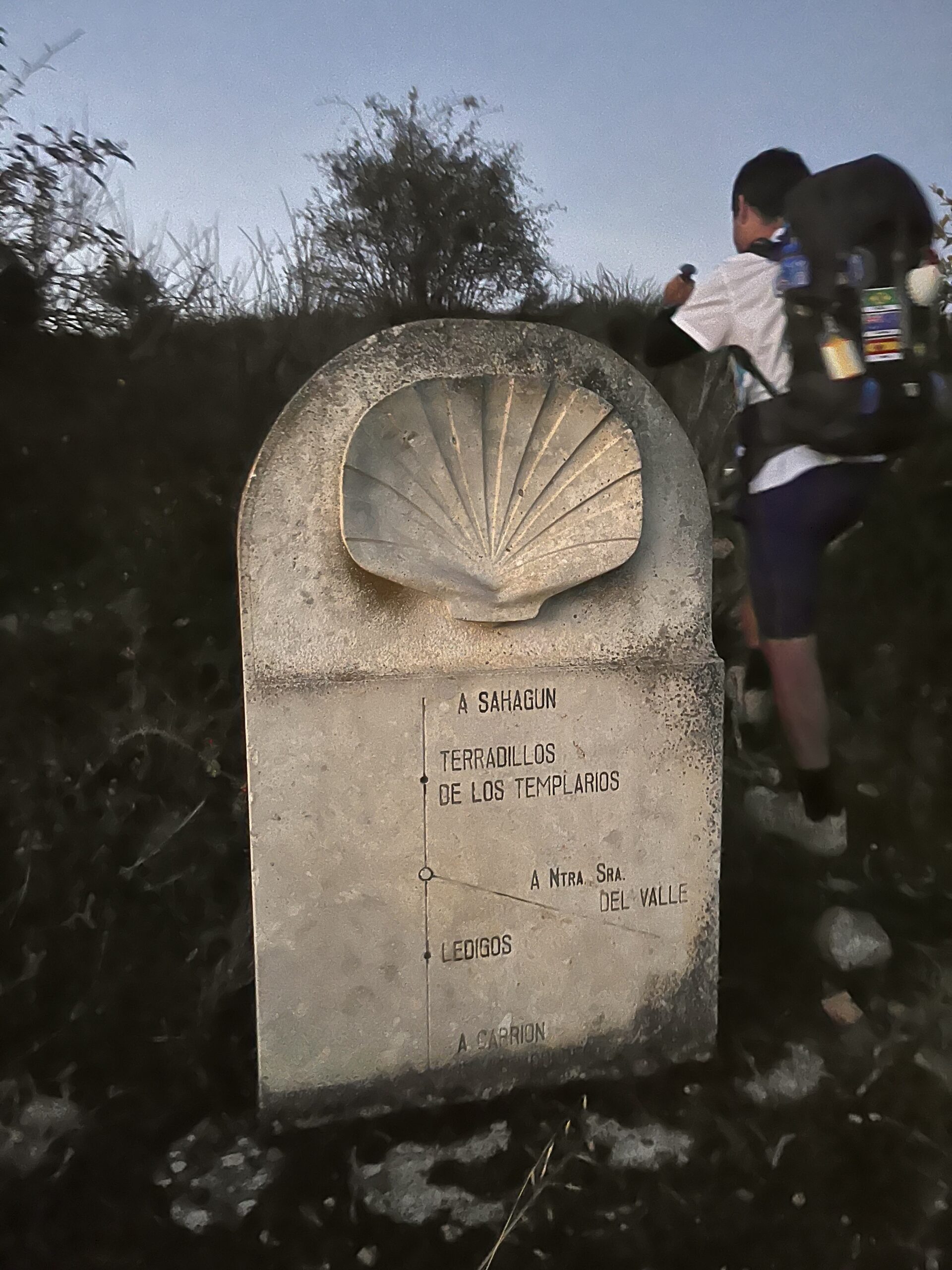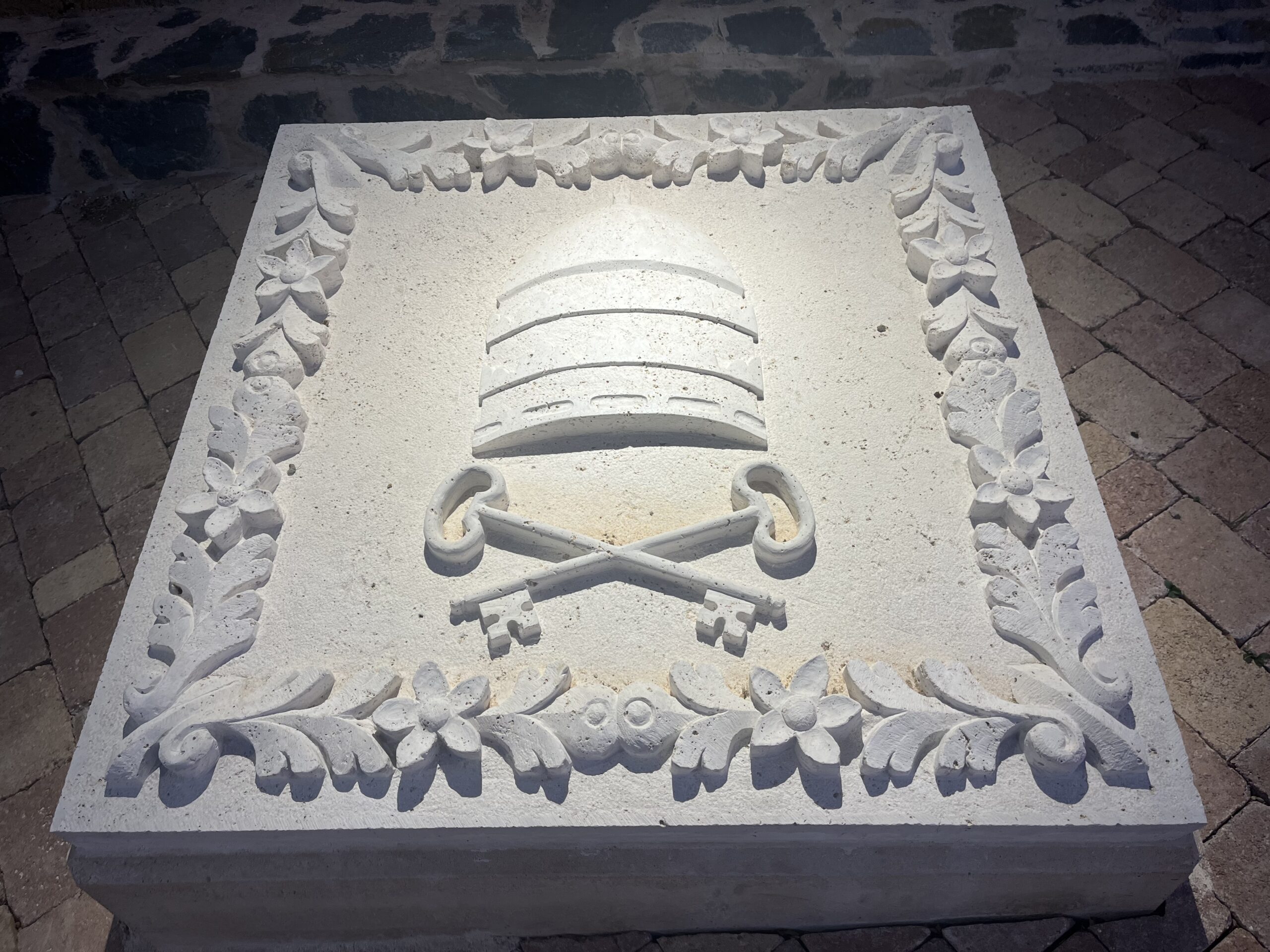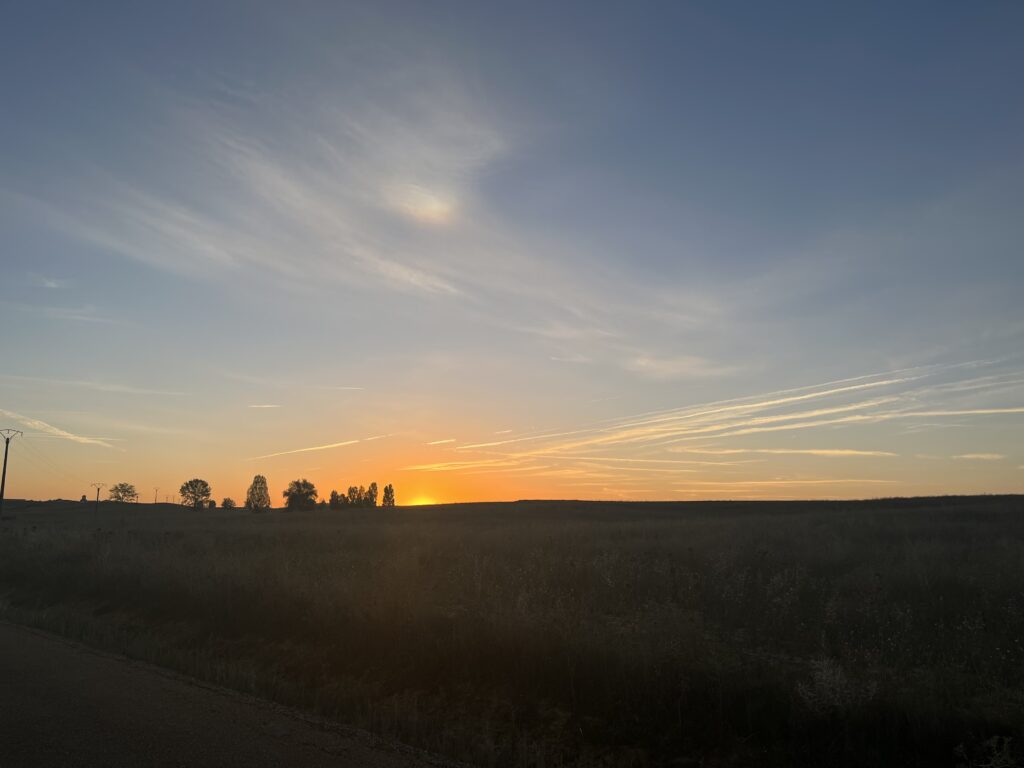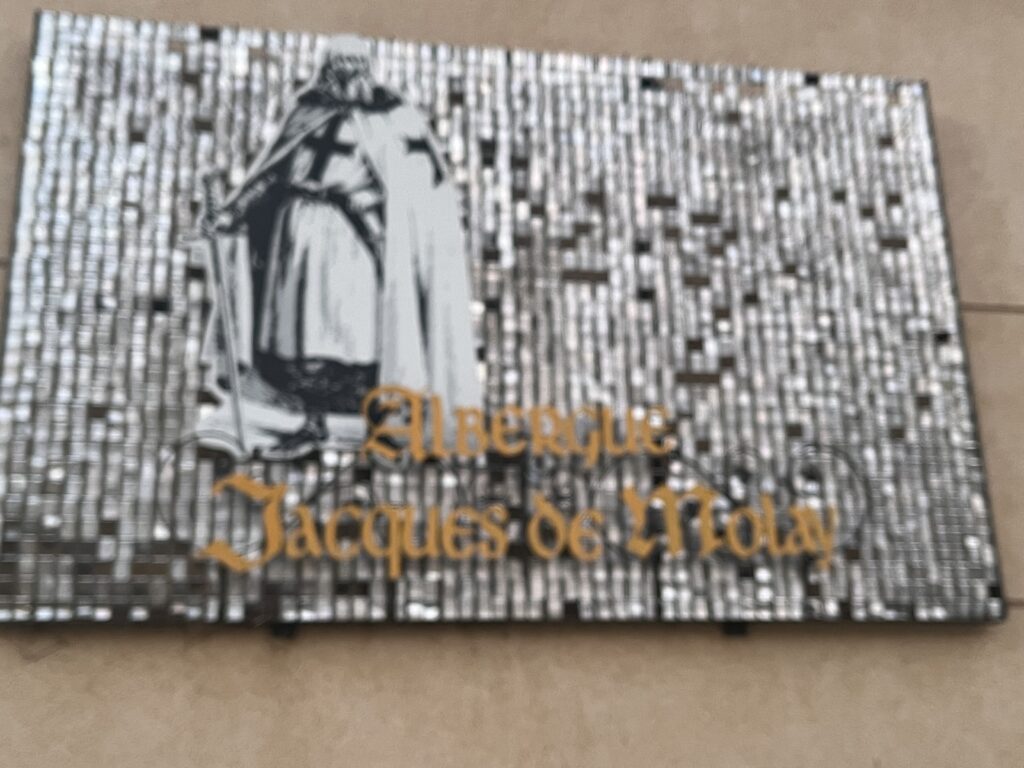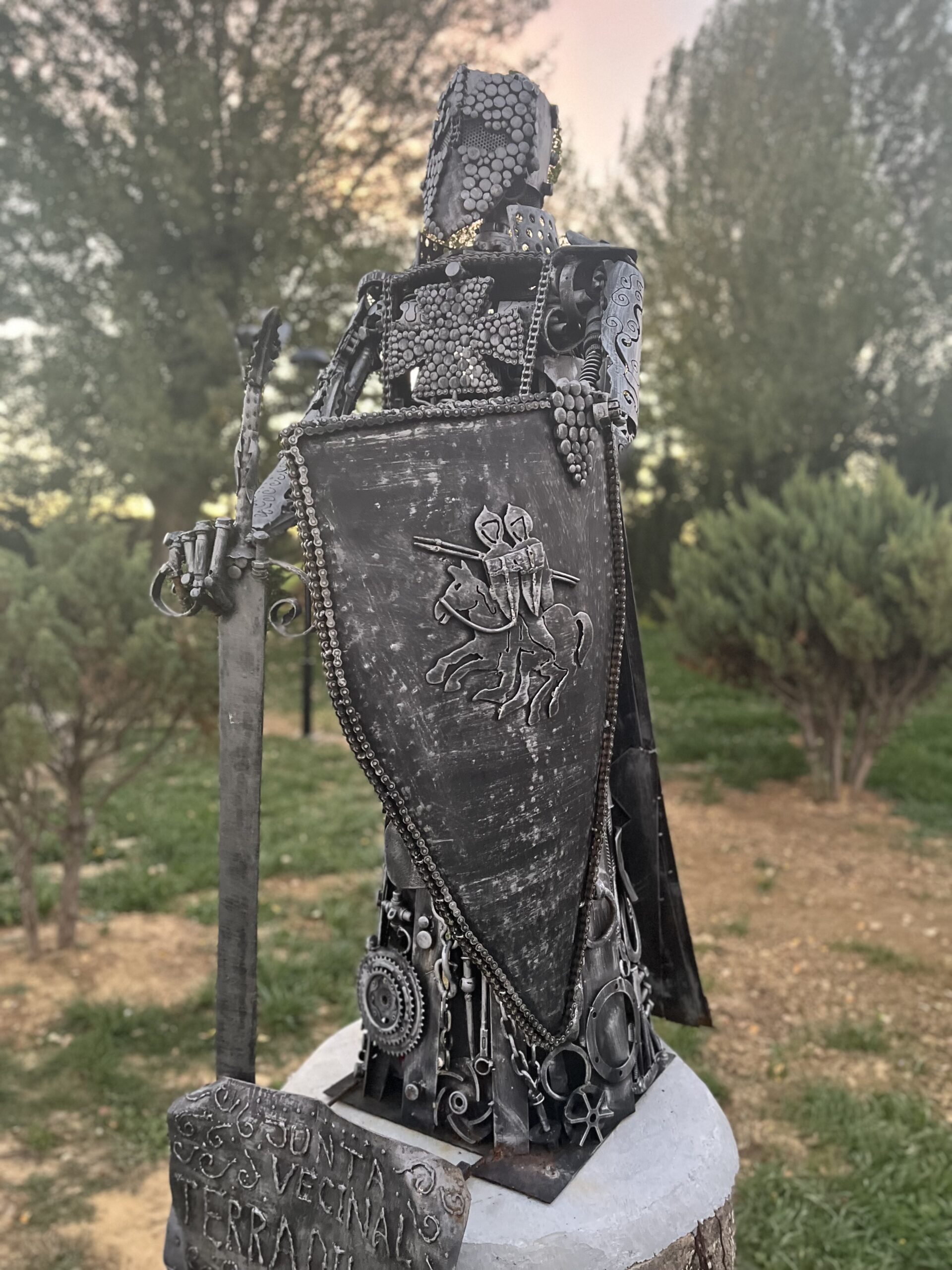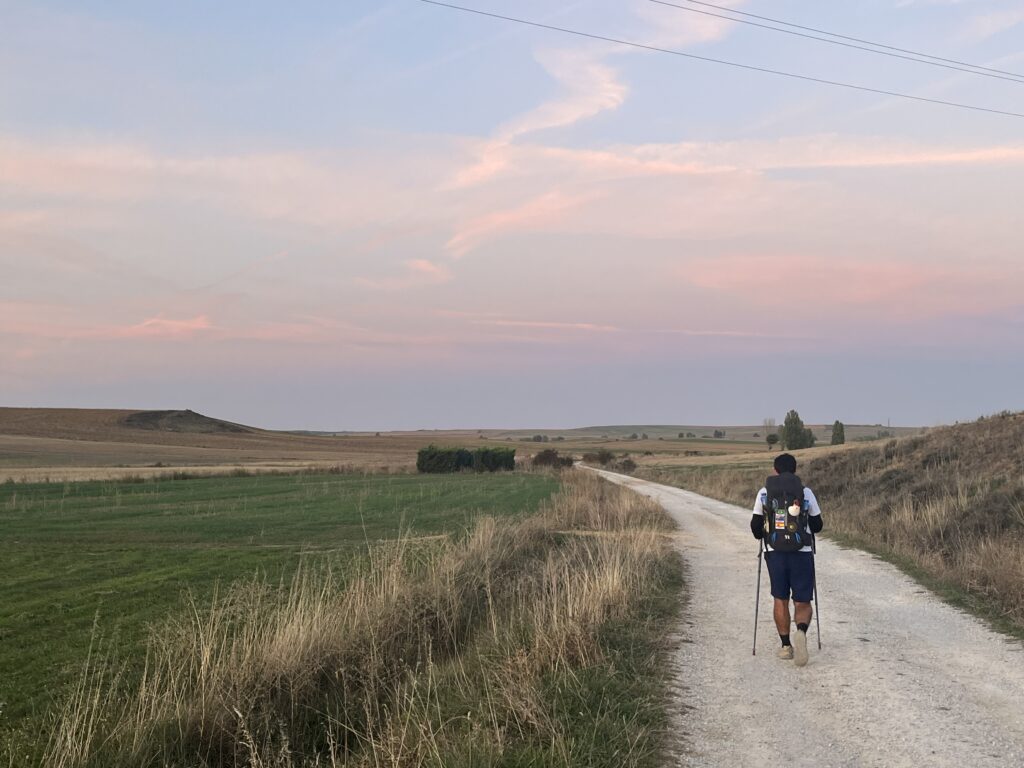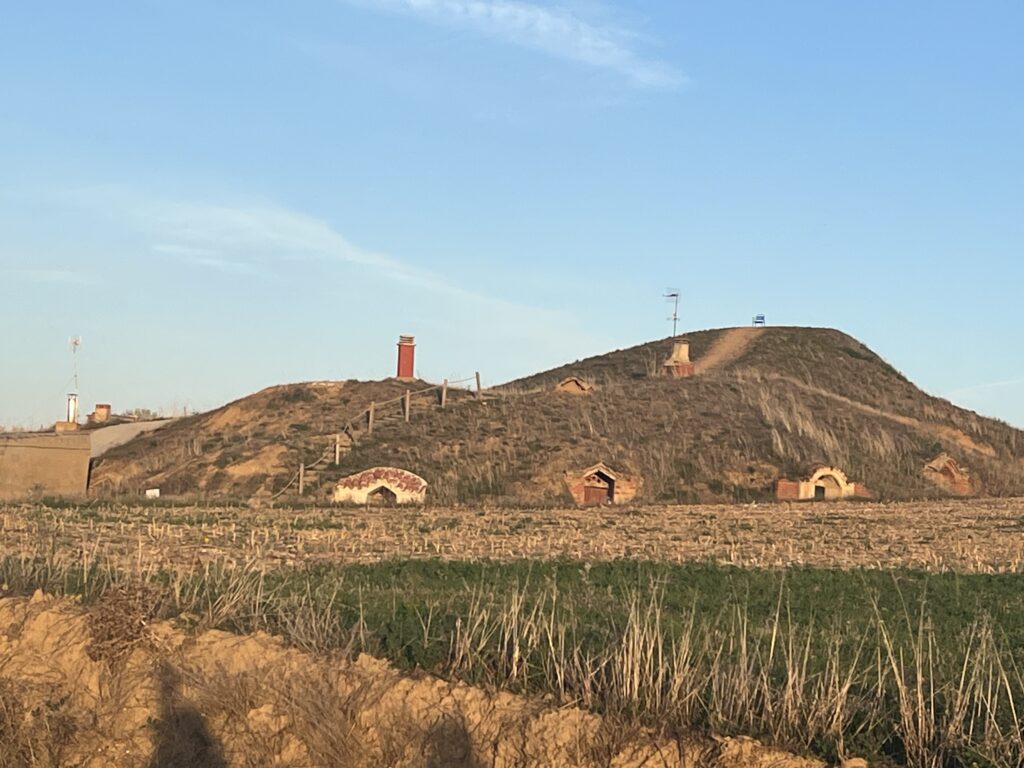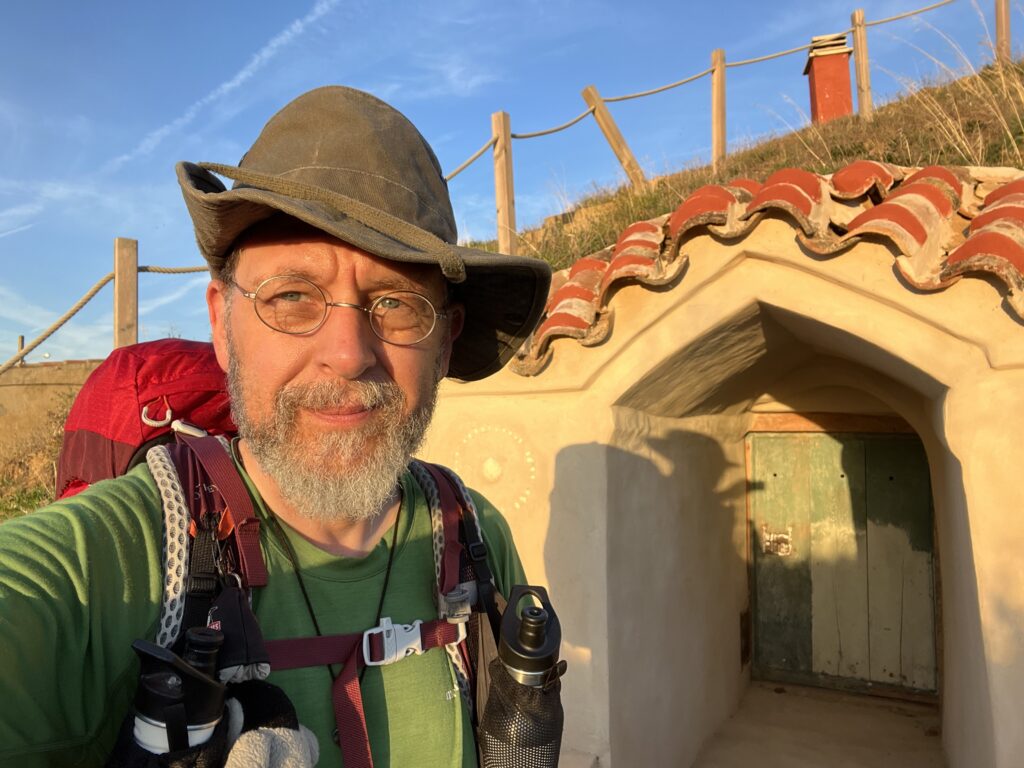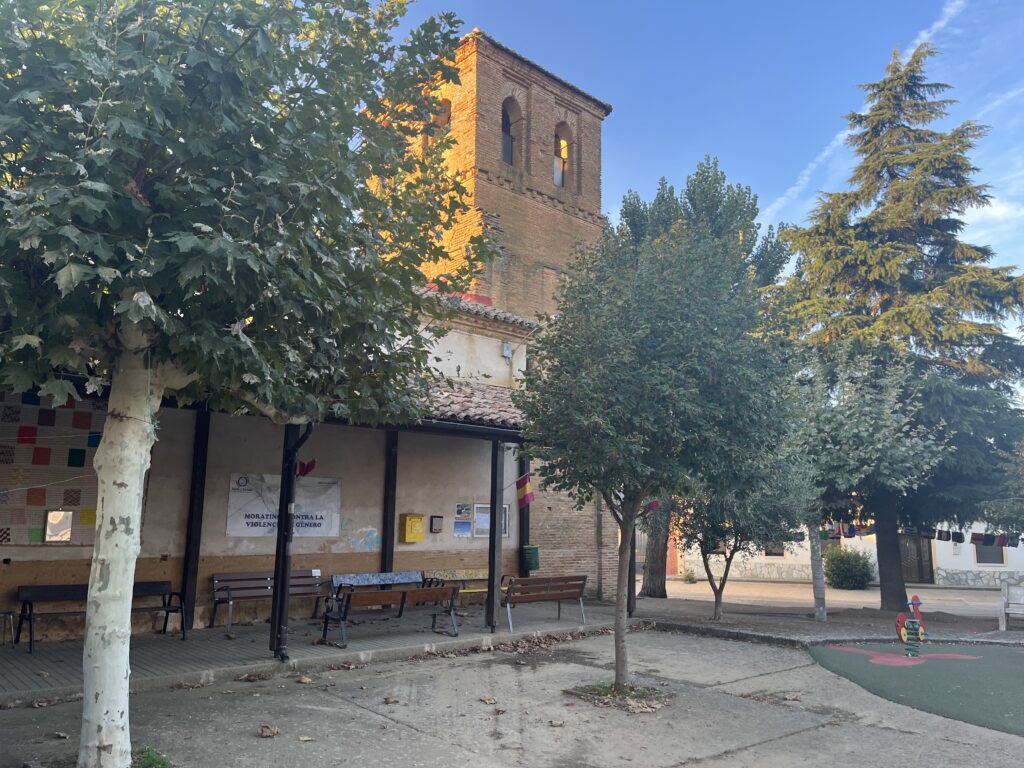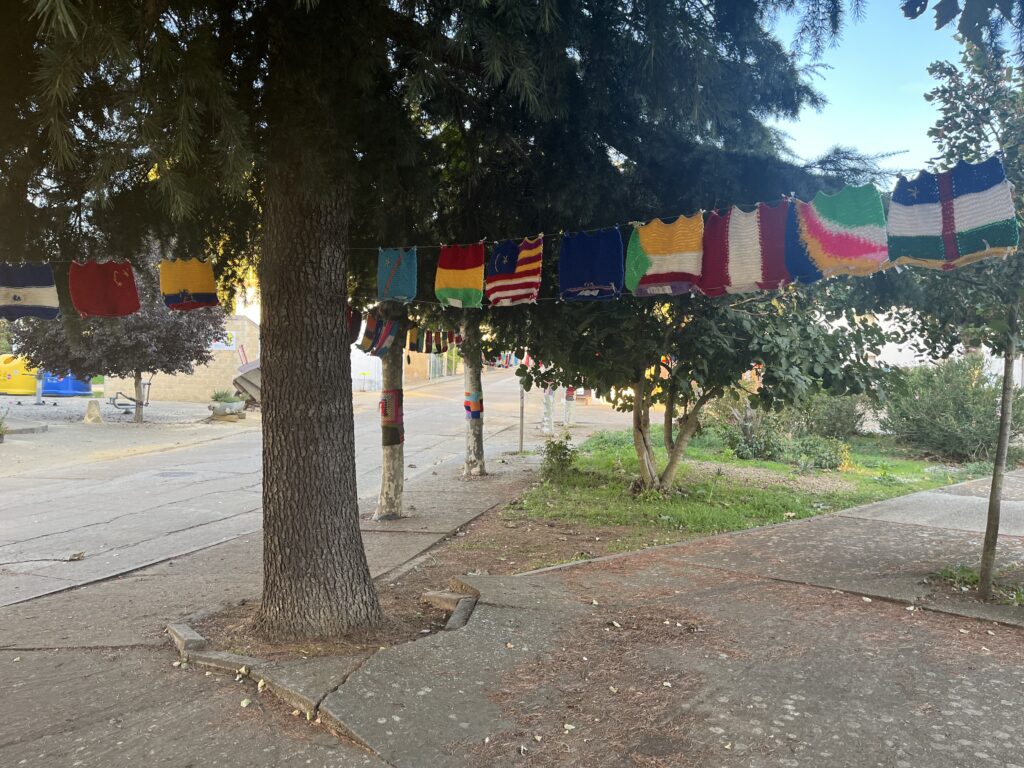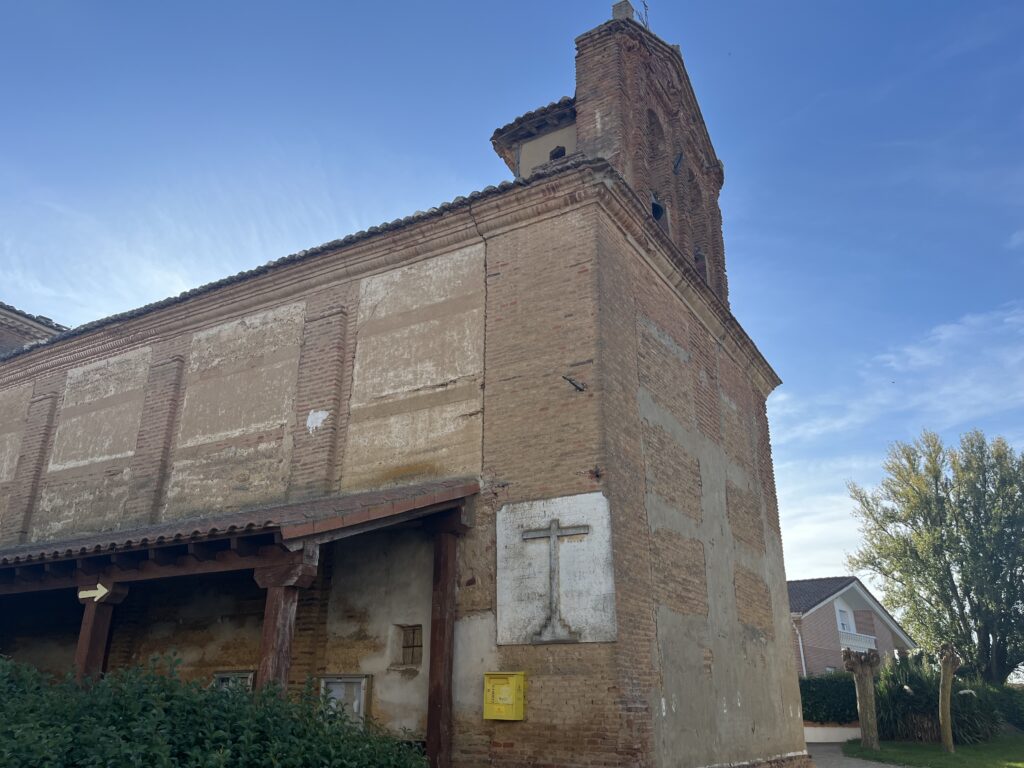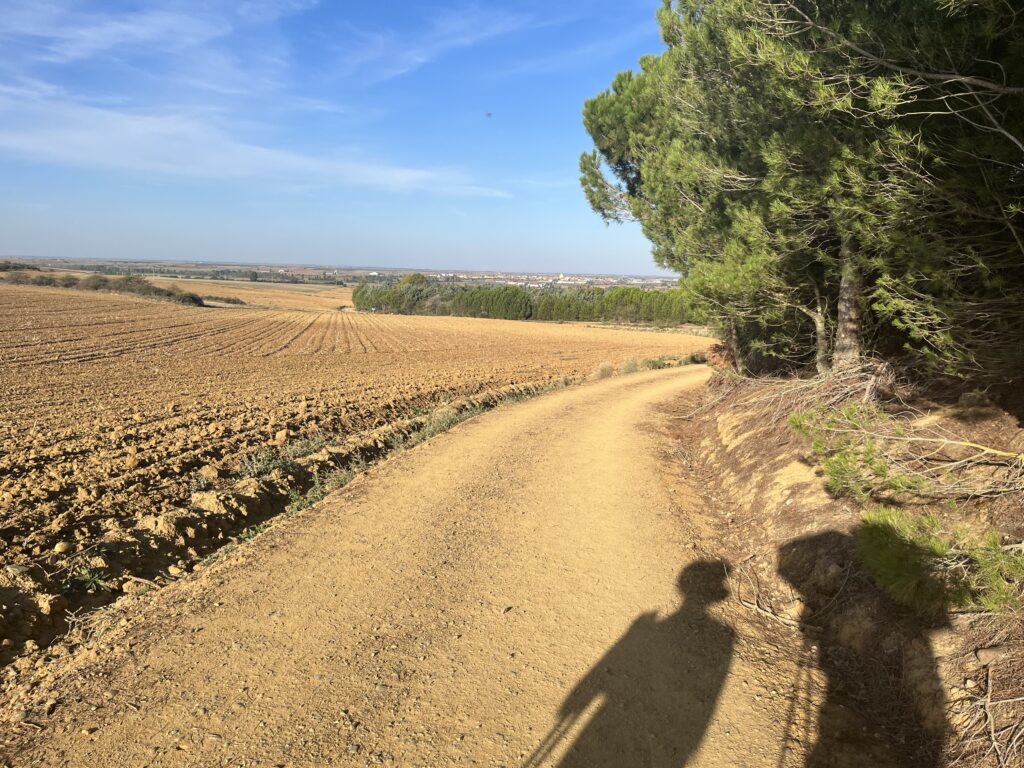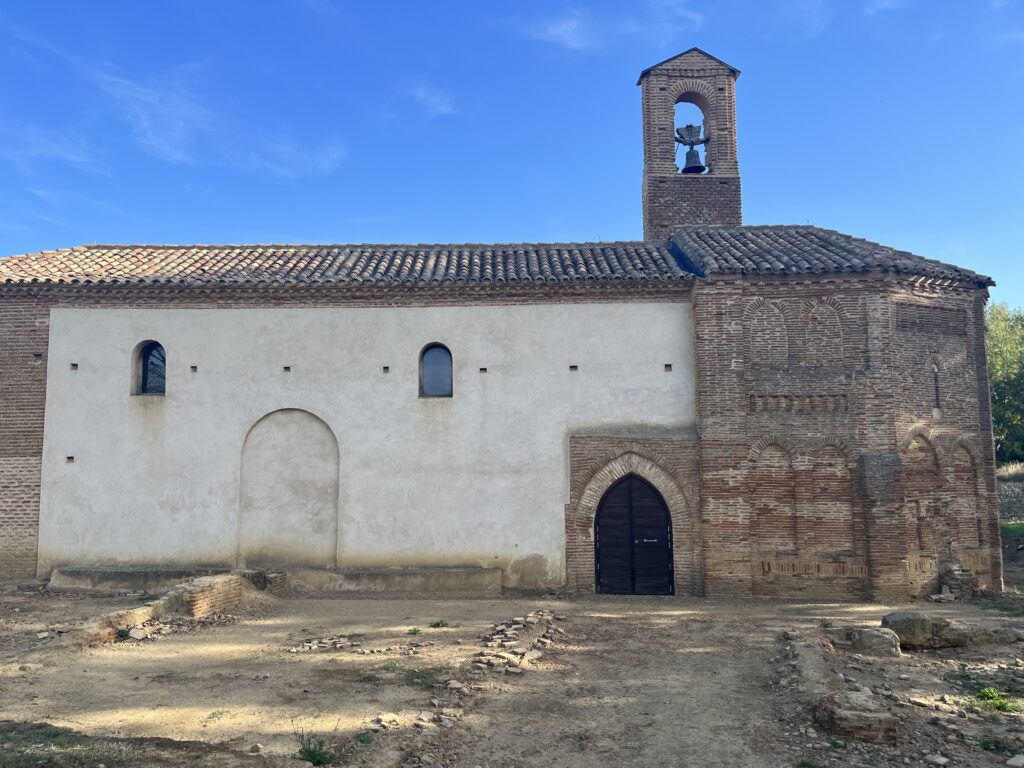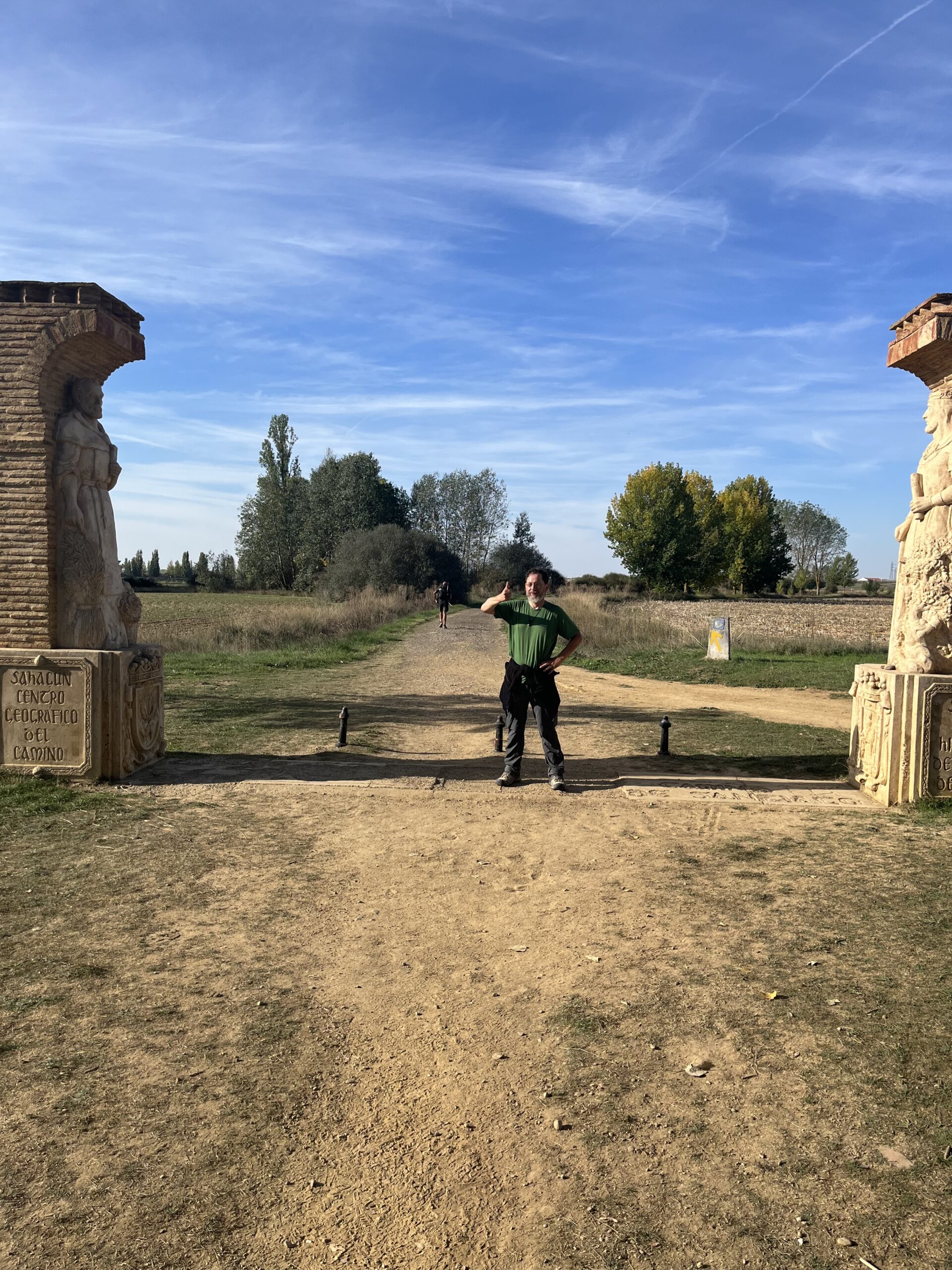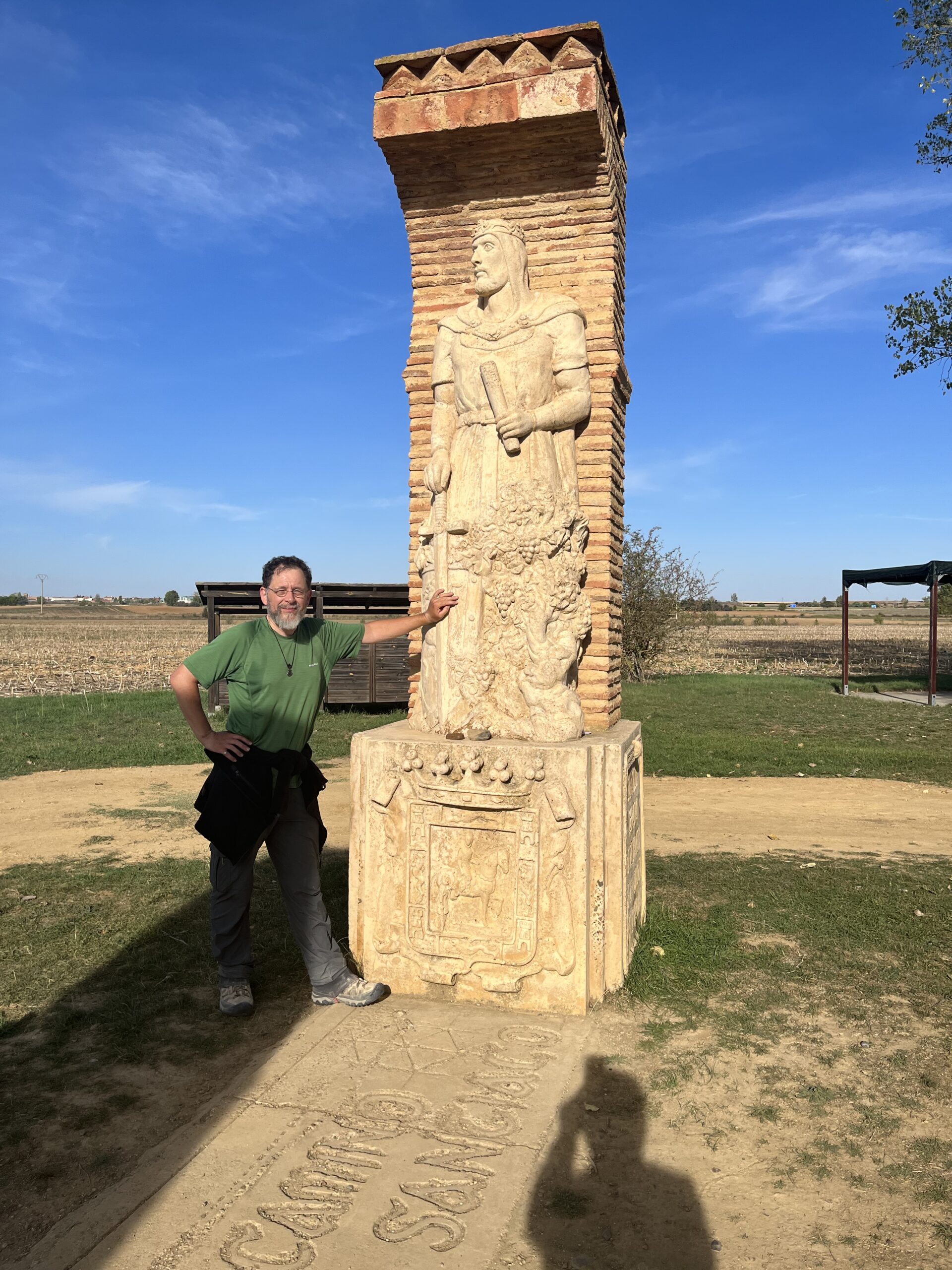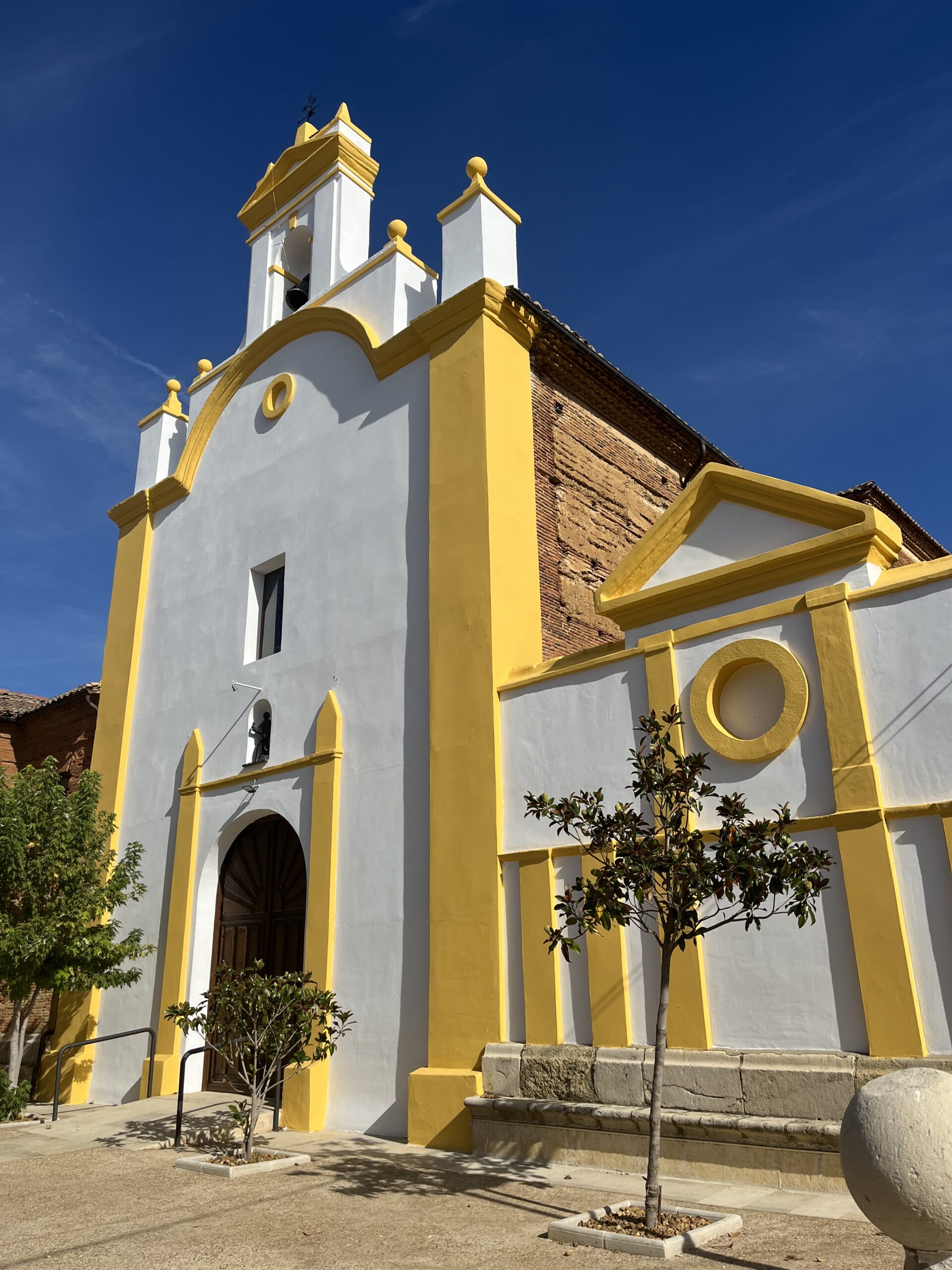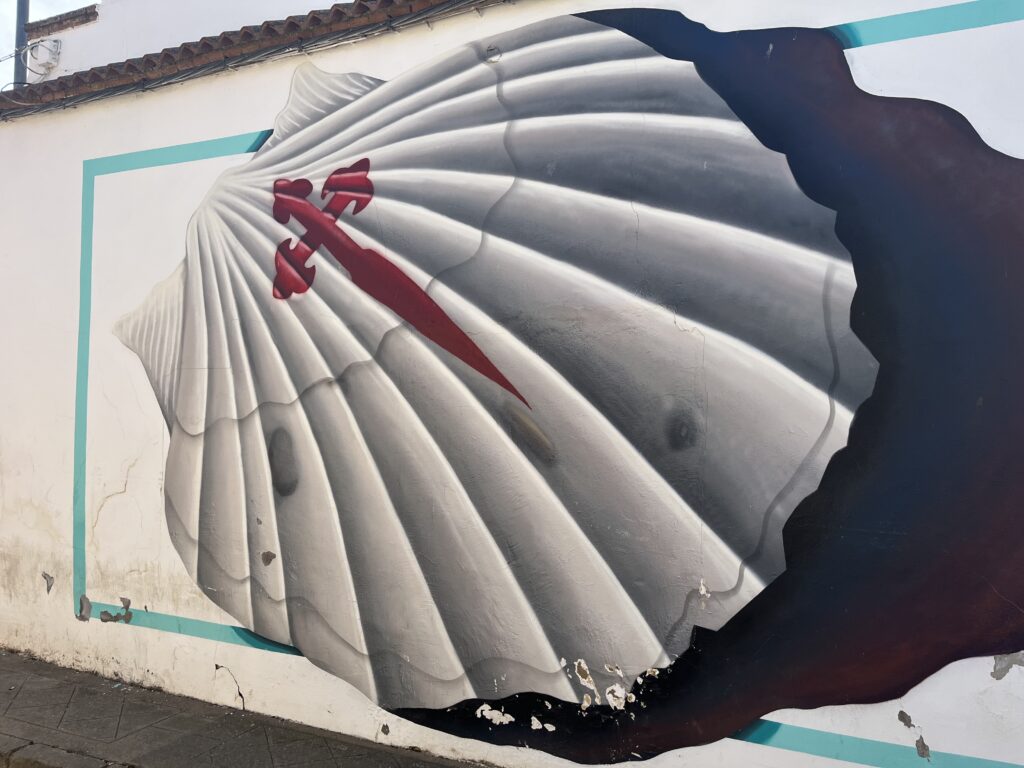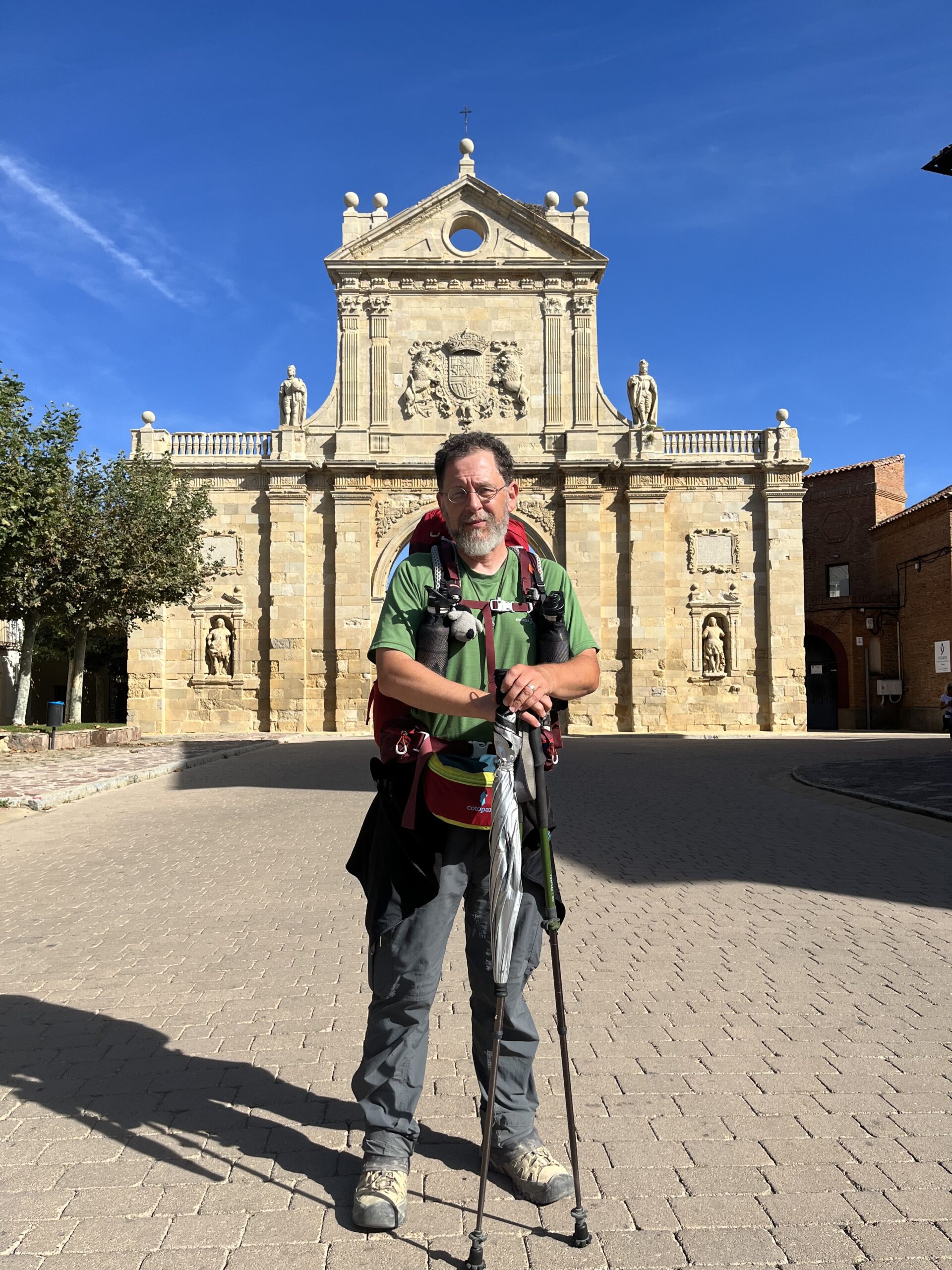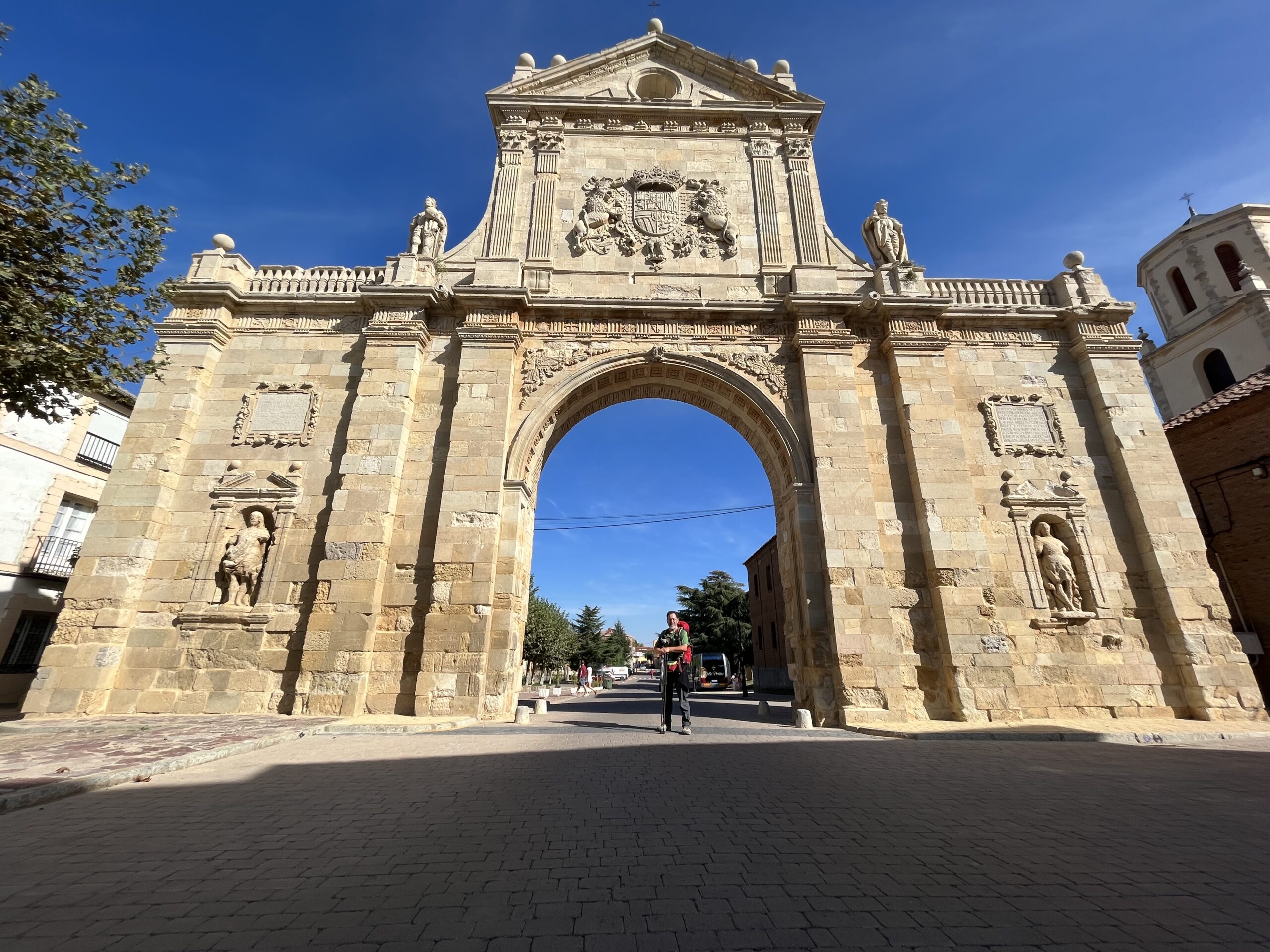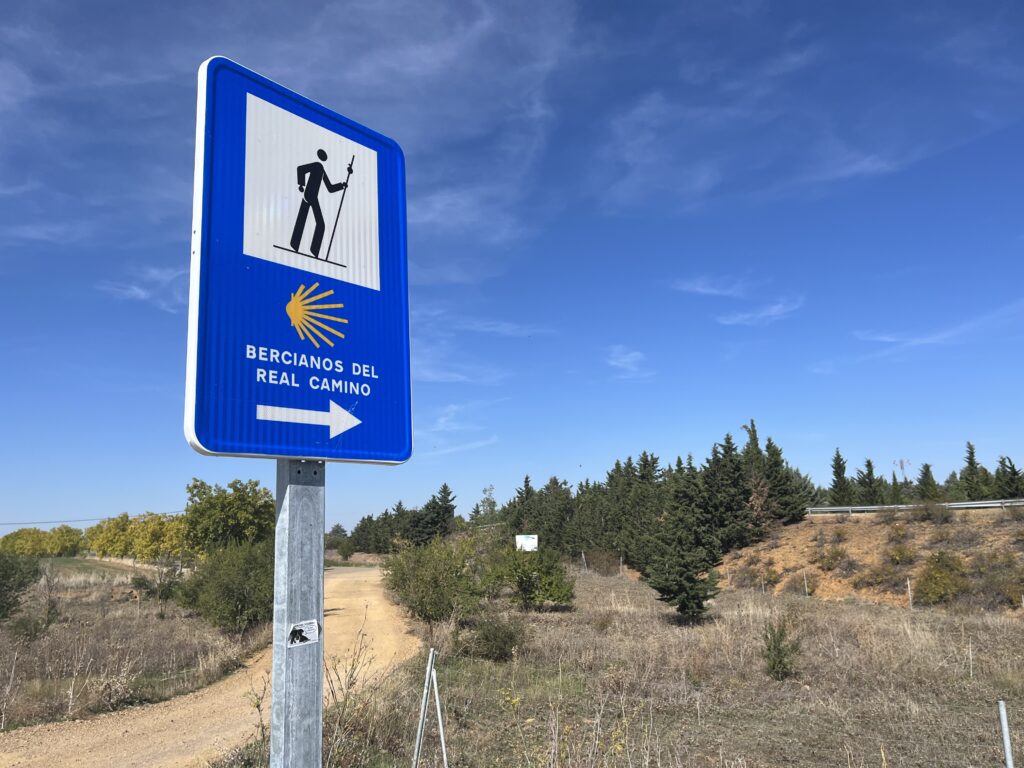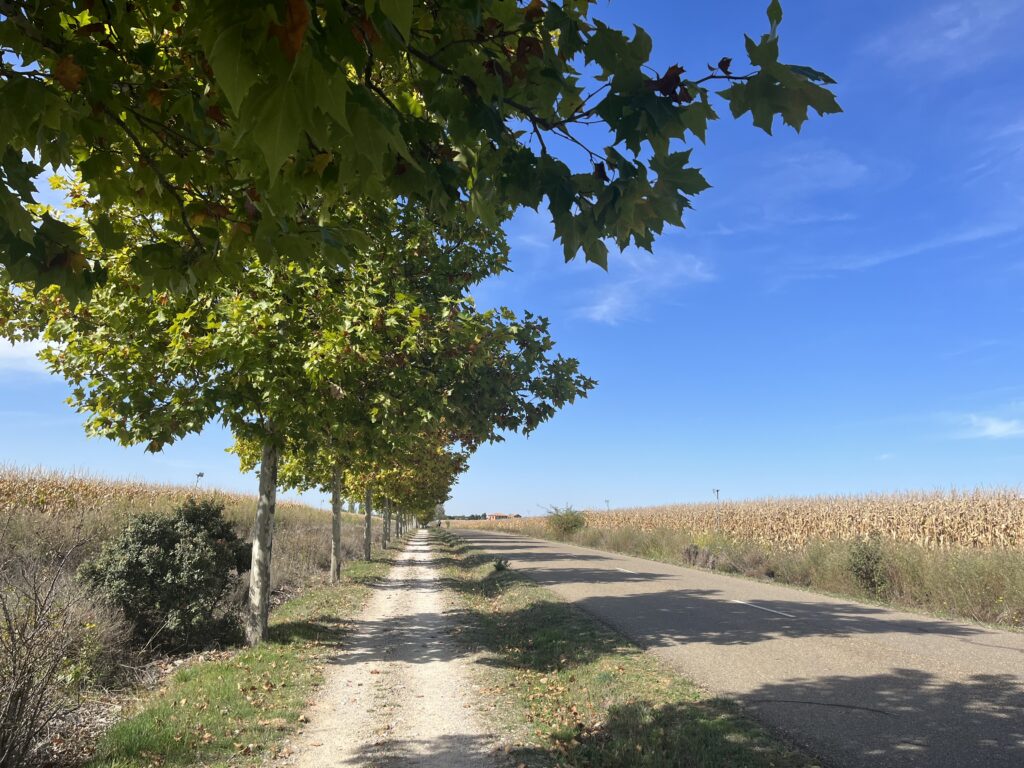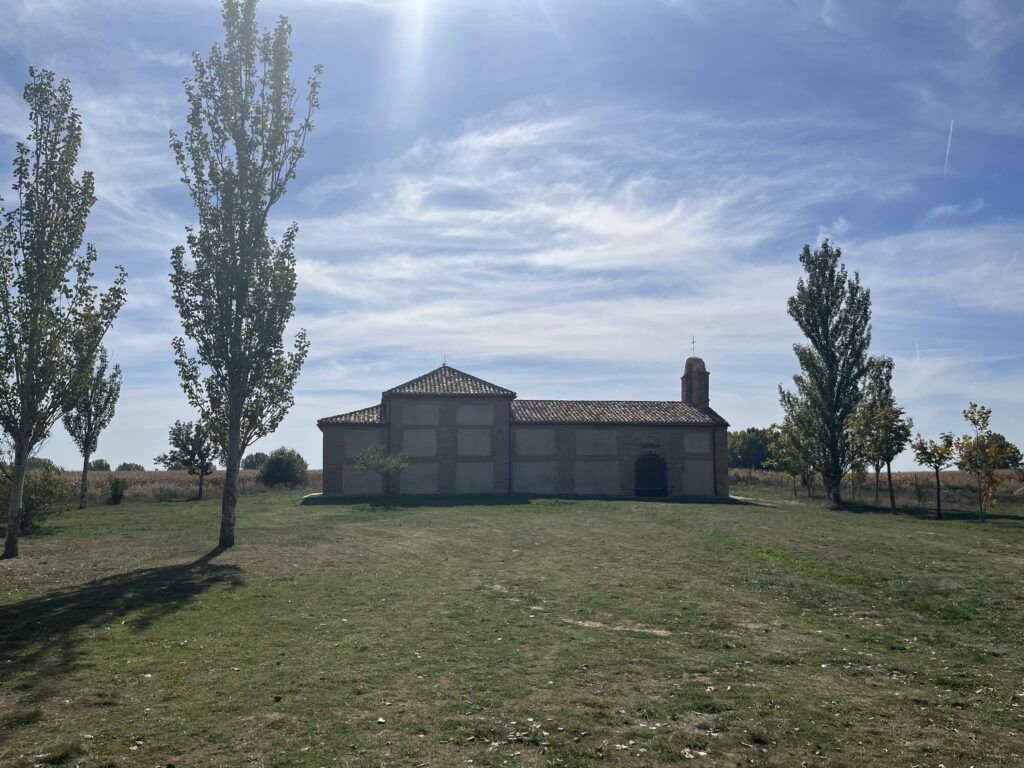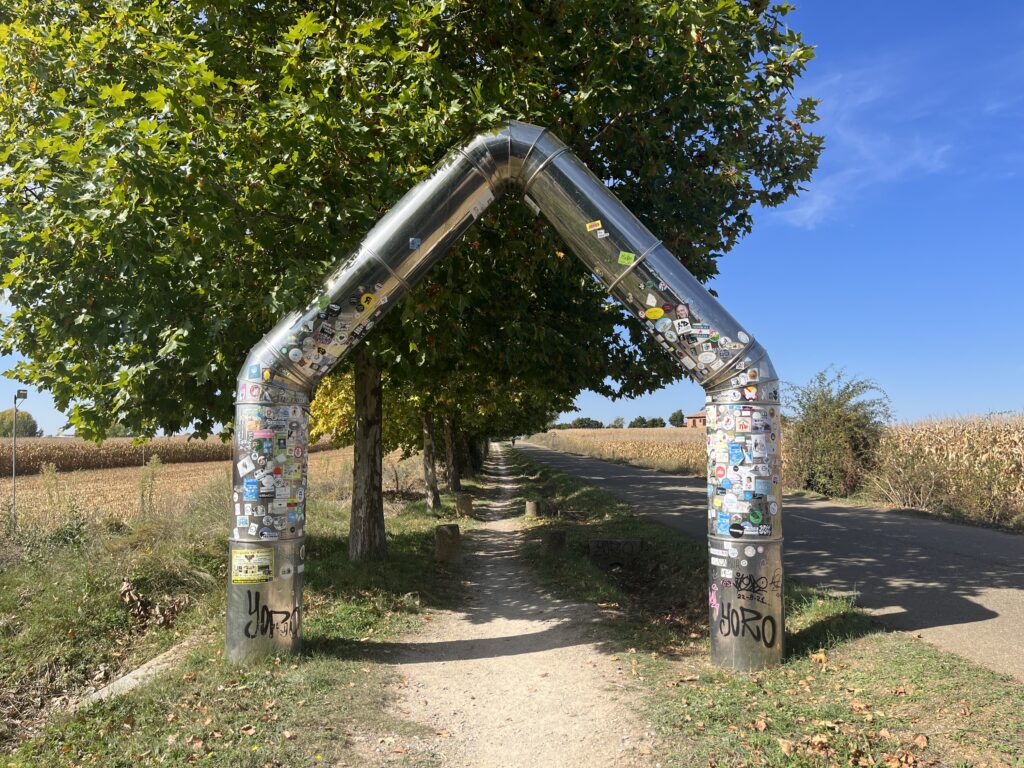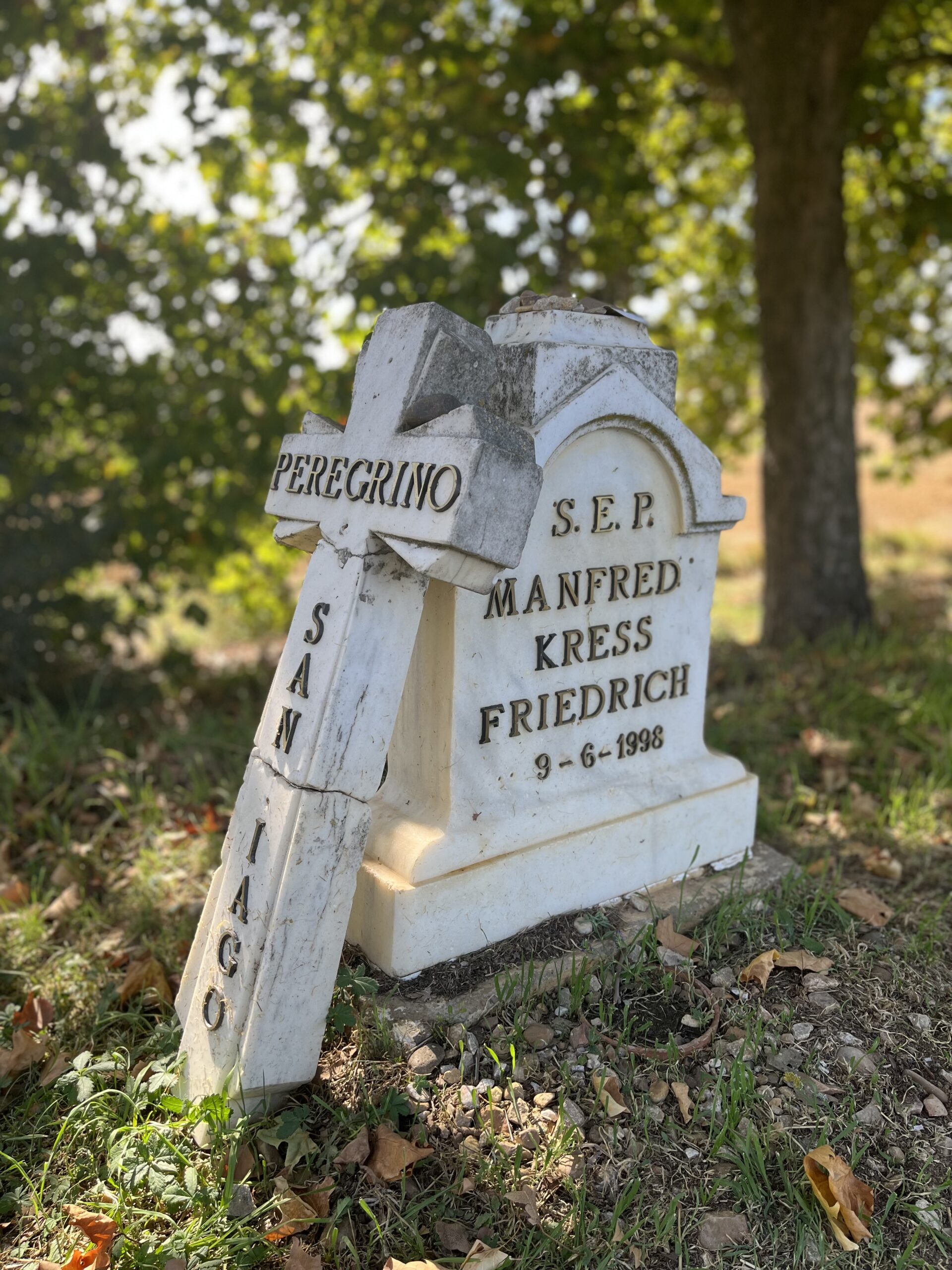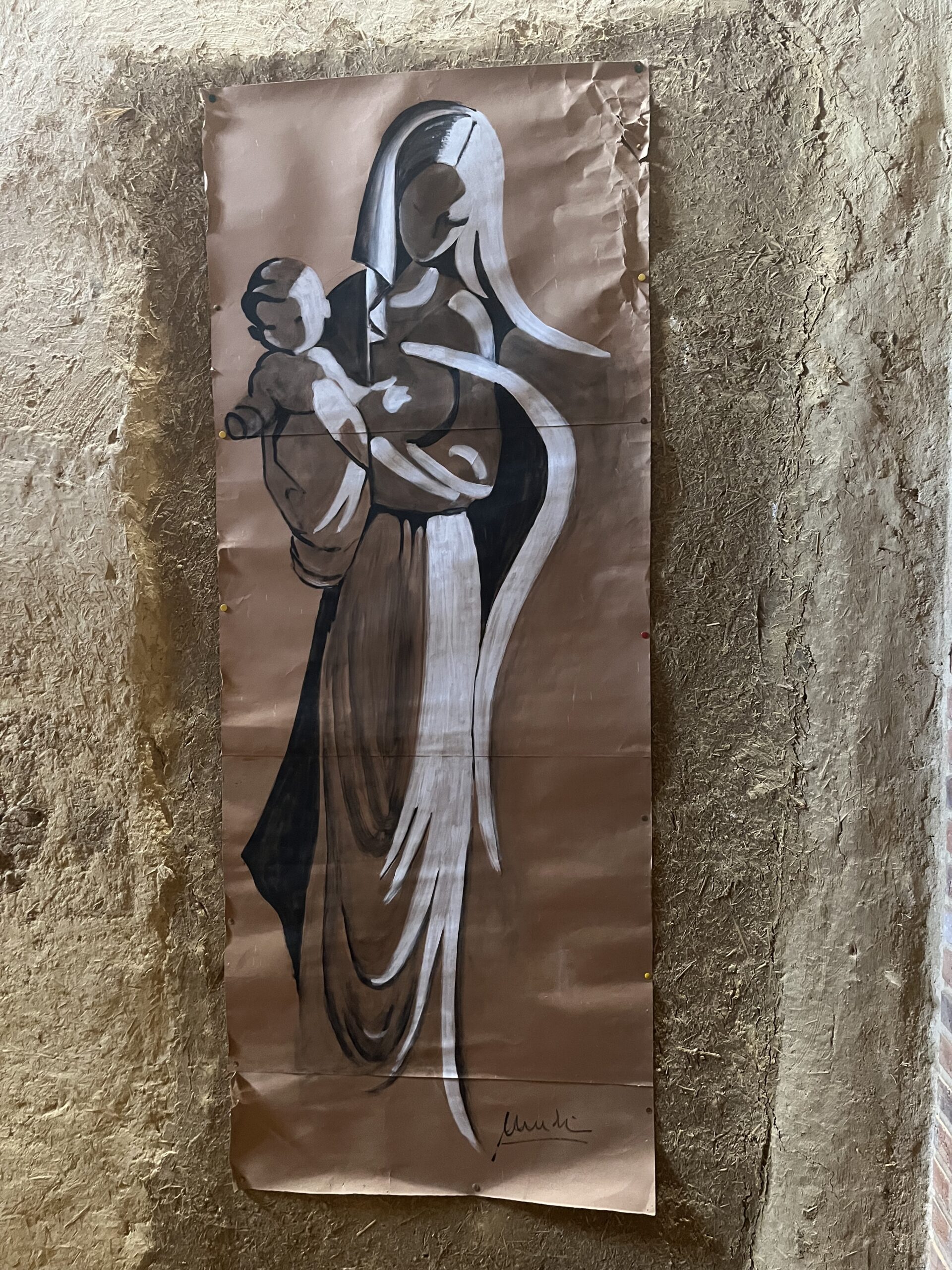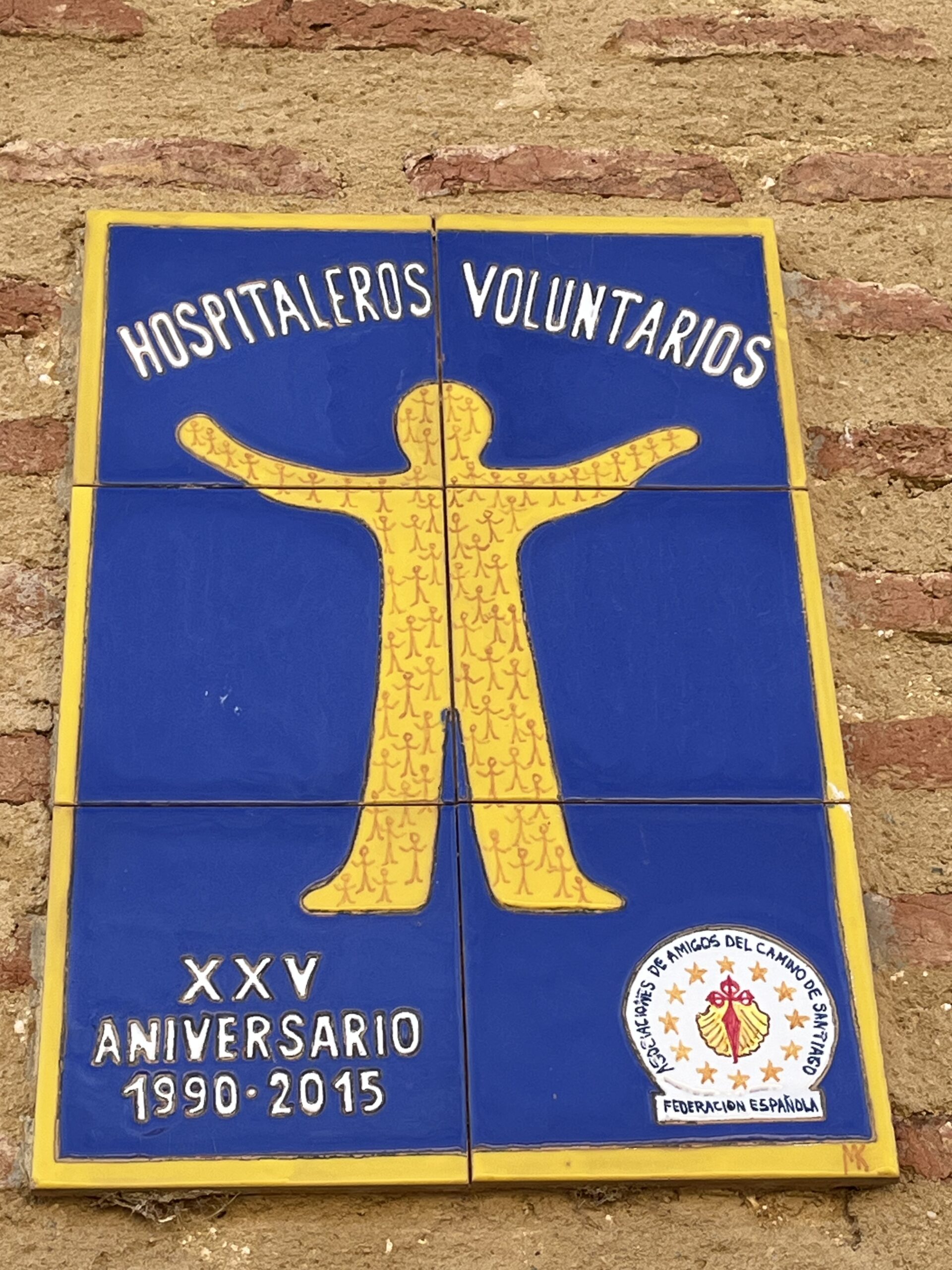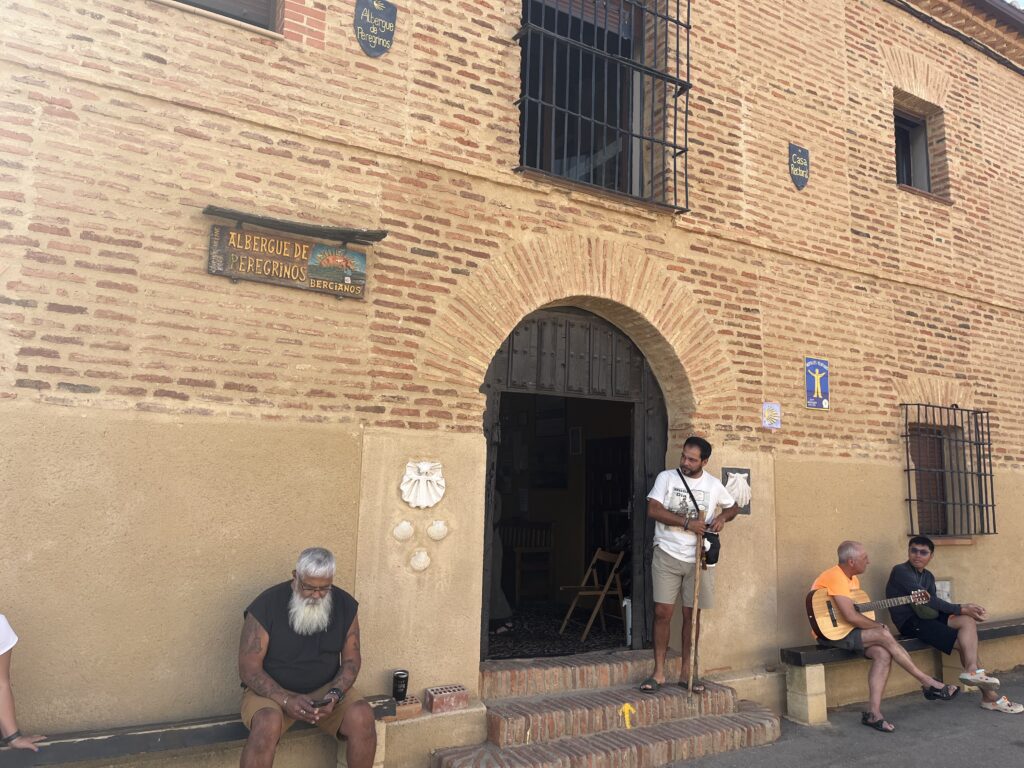Via Podiensis: Templars and Cluniacs
We had a great dinner last night in a dining hall full of pilgrims. The food was some of the best I’ve had in Spain, and the company, from all over the world, was engaging. I stayed up rather later than I intended.
Today, most of the lands that I walked through were once controlled by the Order of the Knights Templar or the Benedictine monks of Cluny.
This morning after breakfasting at the albergue, I left at about 7:30 AM and immediately met up with Mauro, a Brazilian from Australia, and we walked and talked together as the sun rose. We were so engaged in our conversation, that we missed a turn and did some unplanned highway walking before returning to the proper path.
We arrived in the first village of the day, Terradillos de los Templarios, at about 8:04 AM. I went to pay a visit to the parish church, but it was locked. The stork’s nest in the steeple seems to be inhabited by starlings.
The Camino wound its way its way through the village, which is full of references to its Templar past, including an albergue named after the Order’s last Grandmaster, Jacques de Molay.
Afterwards the Camino passed through a couple of little ravines with streams and copses of trees before heading back to the flat of the Meseta.
We arrived in the village of Morotinos at about 8:50 AM. This village is most famous for the bodegas built into the hillside near the entrance. They very much resemble hobbit holes, and the locals have put up a sign explaining what they actually are.
The Plaza Mayor near the church looks like it has been yarn bombed, principally with flags of various countries and regions. The church itself, dedicated to Saint Thomas the Apostle, was predictably locked. Nevertheless, I prayed here for the intentions of the Camino before heading out of the village.
Soon it was back to the wide white gravel road through the endless oceans of grass.
We arrived at the next tiny village, San Nicolás del Real Camino, at about 9:25. We stopped here for a second breakfast. when I left, it was clearly already time for the umbrella. The sky only had a few wispy clouds, and it was already quite warm.
The local parish church, which dates from the 18th century has incorporated into its brick walls some stone bits of previous churches on the site, dating back to 13th century. It was, as expected, locked.
At 10:13, we left the Province of Palencia to enter the Province of León. The landscape was unchanged, except perhaps that the gravel was now the color of dirt rather than the previous shades of gray and white.
More or less immediately after this, we saw the large sprawling town of Sahagún in the distance.
It was back along the highway to the little Ermita Virgen del Puente, which more or less marks the halfway point of the Camino within Spain between Roncesvalles and Santiago. It’s probably pretty close to my 75% mark. The building itself was locked, of course, but I still prayed here for the intentions of the Camino.
Nearby are statues of two of the most influential historical figures of the region. Bernardo de Sedirac (d. 1128?) founded the local Cluniac abbey and became Primate of Spain, and King Alfonso VI “the Brave” of León and Castile (1047-1109) founded the nearby city of Sahagún. The statues form a sort of gateway leading to the town.
As the Camino approached Sahagún we passed under a freeway on the gravel road and through outlying buildings, barns mostly, and then right past a spectacular black-and-white mural of pilgrims, including those from the film “The Way”, and finally passed a large modern hotel and into the urban sprawl.
We walked along the railroad tracks for a bit, and then crossed over into the old city. It was about 11:20 AM by now, and the time was ripe for an early lunch. Here, I said goodbye to Mauro and then ran into Joseph. It was noon before I left the little café.
Sahagún is a pretty big town, and in the past it was the center of a major monastery attached to the order of Cluny. There are still several monasteries and convents in and around the town, but the largest one of all is in ruins spread through a part of the city center. One of its chapels still exists as a parish church.
Francine and I stayed in the town back in 2016, and it was definitely one of the highlights of that Camino for me. I actually considered ending my day here, if for no other reason then to get to visit some of the churches, all of which were locked when I tried the doors. But in the end, prudence prevailed, and I elected to go on to Bercianos del Real Camino as I had planned.
Joseph and I took some photos around the great gate, which is once the entrance to the monastery itself. As we were leaving, I prayed for the intentions to Camino there in front of that very potent symbol of the lost monasticism of Europe.
Somewhere after this, we lost track of each other, and I wasn’t entirely sure if he was ahead of me or behind me. So I continued walking alone.
I crossed an old stone bridge over the Rio Cea, and then the sidewalk ended. It was replaced by the now ubiquitous gravel path along side a major road, now back to grey-white. There were plenty of trees in the section, which thinned out over the course of a kilometer or so.
To my left were cornfields, and to my right across the road mostly empty fields with a scattering of farm buildings. Eventually, this just became endless fields to either side, punctuated occasionally by stands of trees and supplemented by scrubby bushes and wildflowers. There was some pollen or dust in this section that kept giving me sneezing fits.
Just before 1 PM, Camino crossed the highway. This is also where the Camino split into two different routes for a while. It looks easy enough on the map, but on the ground it’s a little more difficult to figure out which path to take, as the fork occurs near a highway interchange. Fortunately I eventually found a very clear sign pointing me towards my intended stopping point.
Even though I had recently topped up my bottles, I was drinking through my water at an alarming rate, and one of my bottles was already empty.
The Camino path was now under a lovely line of young beech trees, with a much less busy road to the other side. I only saw one car on it the entire way.
At around 1:45 PM, I stopped to pray at the locked gates of the 17th century Ermita Virgen de Perales. Just after this, there was a strange sort of ductwork metal archway over the Camino path.
I arrived in the village of Bercianos del Real Camino at just about 2 PM. I was down to my last mouthfuls of water. I am staying at the albergue parroquial, with a couple from Oregon serving as hospitaleros. Fellow pilgrim Edgar from the UK, who I last saw walking out of Nájera, is in the bunk next to me.
I did something I never do. I lay down in my bunk and just napped for about an hour and a half.
Later, as I was coming back from doing my laundry, I ran into Tara from St. Louis. I think the last time I saw her was when we walked into Burgos together. It was fun catching up on the whereabouts of our various Camino friends.
Date: 08 October 2023
Place: Bercianos del Real Camino
Today started: Ledigos
Today’s Photos!
